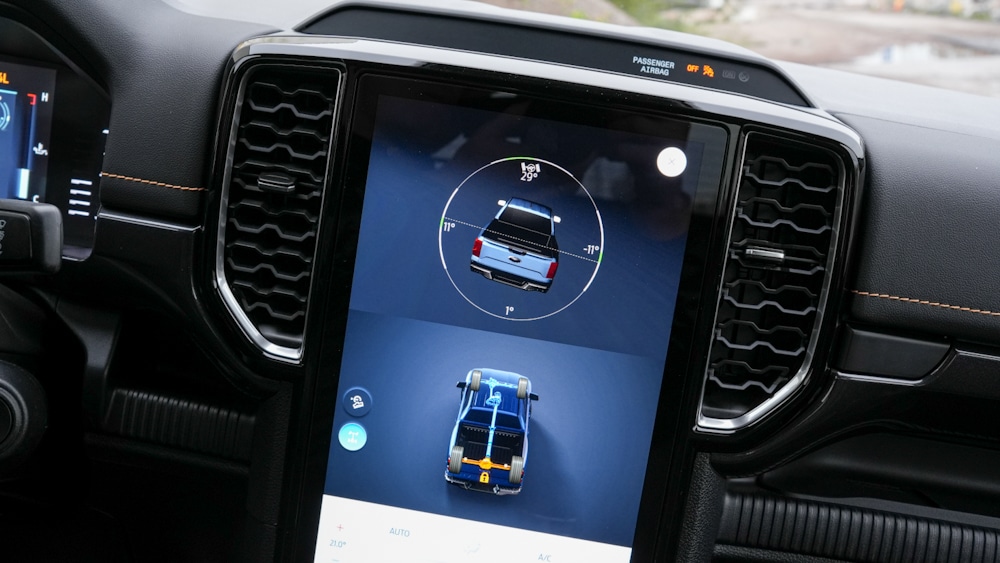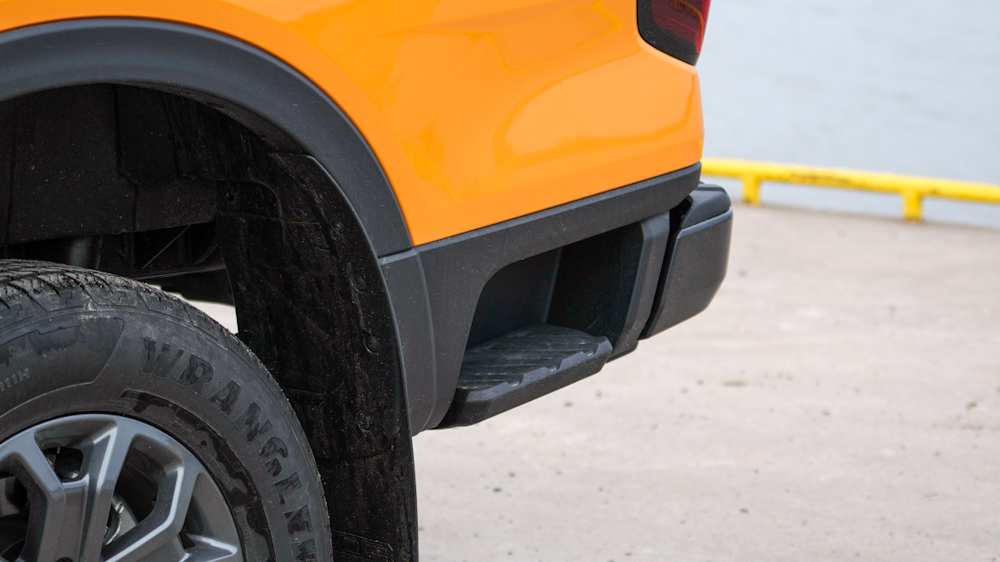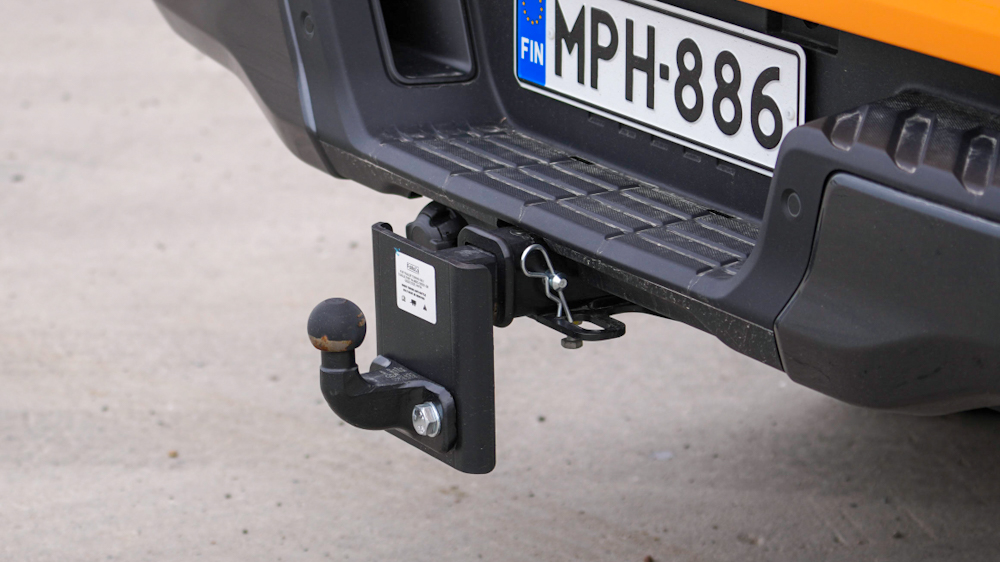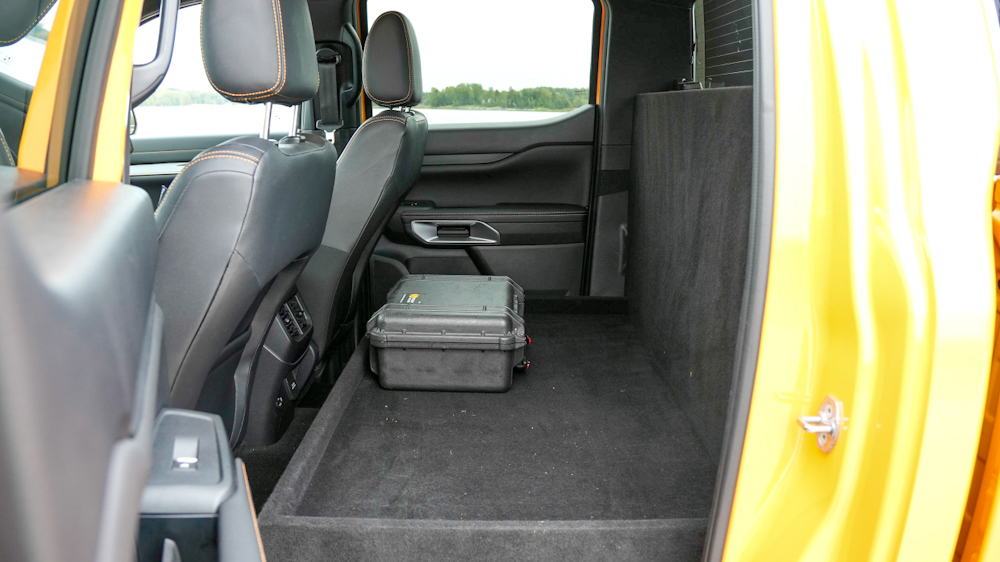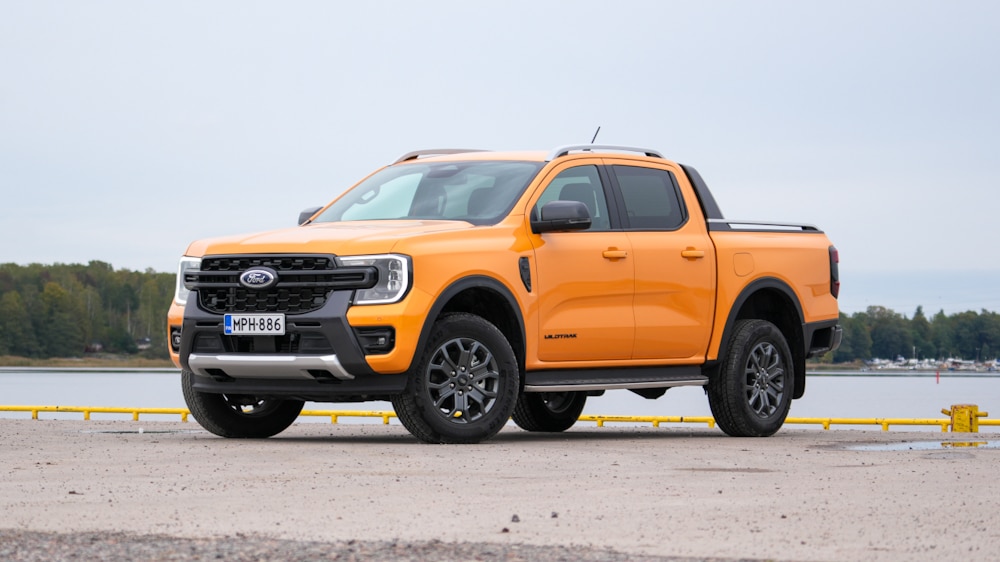The first thing that comes to mind is a large pick-up truck from America, probably with a large caravan or boat trailer attached to the rear.
In Finland, convertibles are not nearly as popular as they are over the border, where the large size of a convertible even seems to be something of a status symbol – the bigger the tyres, the higher the ground clearance and the louder the engine noise, the better.
Not so in Finland, and rightly so. The smallest engine available on the American market for the new Ranger is a 2.3-litre EcoBoost with just under 300 horsepower. We tested the 205-horsepower, 2.0-liter diesel version, which is in the middle of the power options for the Finnish market.

In addition to the test-driven four-door Double Cab, the Ranger is available in two-door Single and Super Cab models. The Ranger is also available as a chassis-only model, allowing you to build the necessary equipment on top of a good chassis.
The new Ranger is a few centimetres larger than its predecessor. More specifically, the wheelbase has been increased by 50 mm, allowing for greater stability in handling and allowing the front of the car to approach a steeper obstacle or hill before the front bumper scrapes the ground. The track width of the car has also increased by a critical 60 millimetres, which again allows a 120 cm. wide Euro pallet to be placed transversely on the platform between the fenders that rise up transversely on the platform.
In terms of appearance, the new Ranger has been given more angularity than its predecessor. The main differences are noticeable at the front of the car, where a certain linearity of the previous model has been replaced by clearer, more angular shapes. The headlamps are larger and the front grille has become more rectangular.
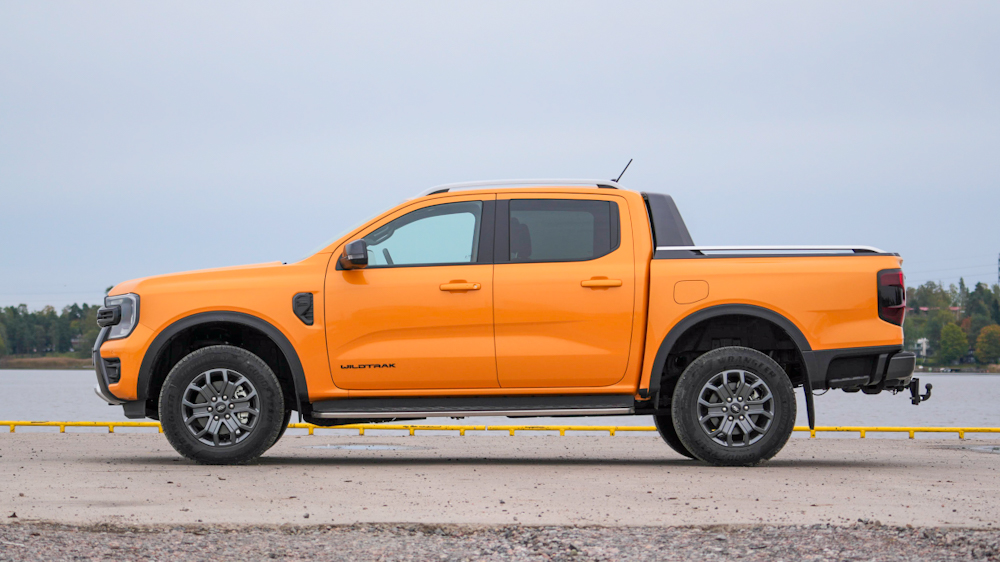
The changes to the car’s side profile are less pronounced, and the biggest change for the discerning eye is in the wheel arches, which are noticeably less shaped in the new model. Black plastic parts for the arches have also been introduced in most model versions.
The Ranger comes standard with either a plastic or aluminium running board, depending on the model. Only on the XL model, the lowest trim level, is the running board not even available as an option. An integrated step is available on the rear bumper of almost all models in the various trim levels to facilitate, for example, tying up or climbing onto the platform.
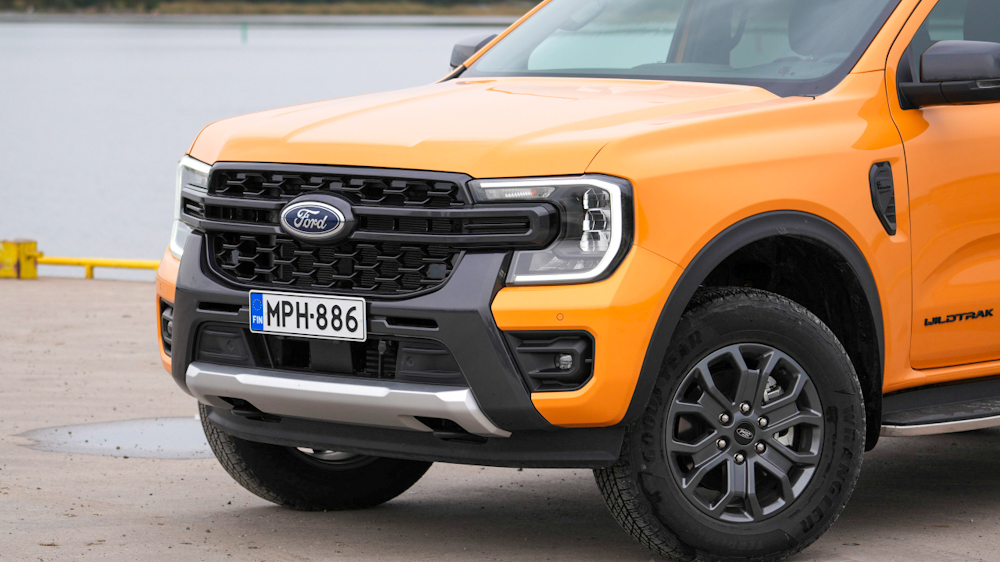
On the edge of the tailgate, there is a “measuring stick” to the nearest centimetre and sockets for electrical equipment. In addition to several attachment points, the test vehicle had load securing rails on the upper edges of the platform. The tie-downs, which can be moved on the rail, can carry a load of 250 kg.
To protect the test vehicle from the ravages of time, an injection-moulded pallet truck was chosen with a surface that feels like rough sandpaper. Otherwise, the test car’s equipment list was unusually short, with only a tow hook and a brightly-coloured Cyber Orange metallic paint job to go with the injection-moulded trough.
A convertible can also be a nice travelling companion
When it comes to the Ranger, looks can be deceiving when it comes to drivability. Despite its coarse, 255-wide tyres, the almost two-and-a-half-tonne tool is unobtrusively comfortable on the road.
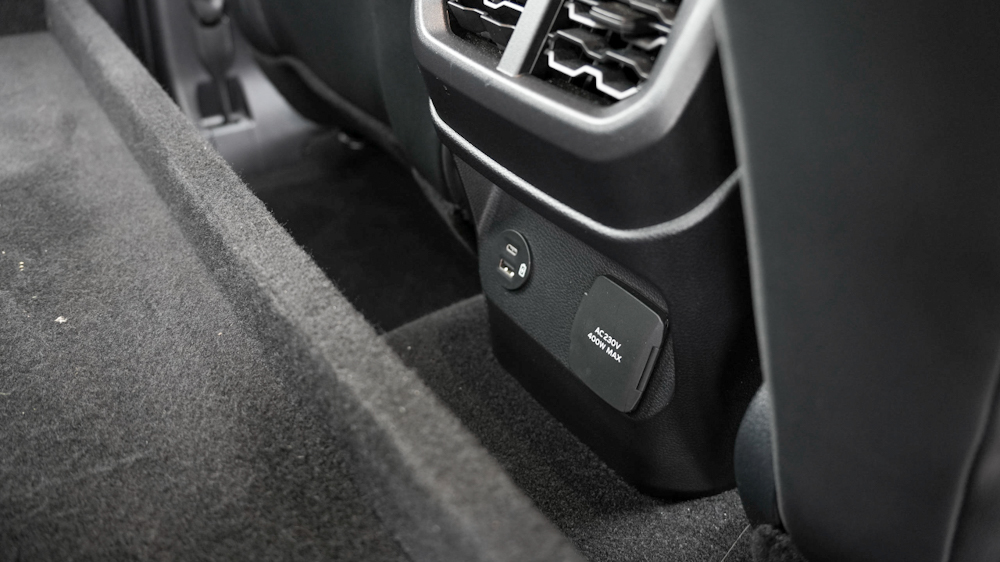
Engine options for the Ranger include two power versions, a two-litre and a three-litre diesel. The two-litre, 205-horsepower version of the test car, which is the more powerful of the two options, combined with a 10-speed automatic transmission, seemed to move the car smoothly without any major drag.
Travel is made easier by the secure and calm-feeling lane departure warning system and the standard active cruise control.
The engine and gearbox worked seamlessly together. Despite the large ten-speed range, the gearbox did not jump aimlessly from one gear to the next. The comfortable driving experience is crowned by low tyre noise and good visibility from the cab in all directions. The large size and tool-like clumsiness only became apparent at quieter speeds in tight parking garage and city driving.

Fuel consumption isn’t the lowest of the low, but considering the size, tyres and drag of the car, there’s hardly anything to be done about consumption. Test-drive consumption was steady at just under 10 litres per 100 kilometres. The manufacturer’s claim of 8.7-8.9 l/100 km. is therefore very close to the truth, at least in temperatures of ten degrees Celsius.
Off-road, the Ranger’s appetite for driving is certainly no less than on the road. The off-road adventures of the test drive were confined to a poorly maintained cottage road and a gravel road and sand pile at a construction site.
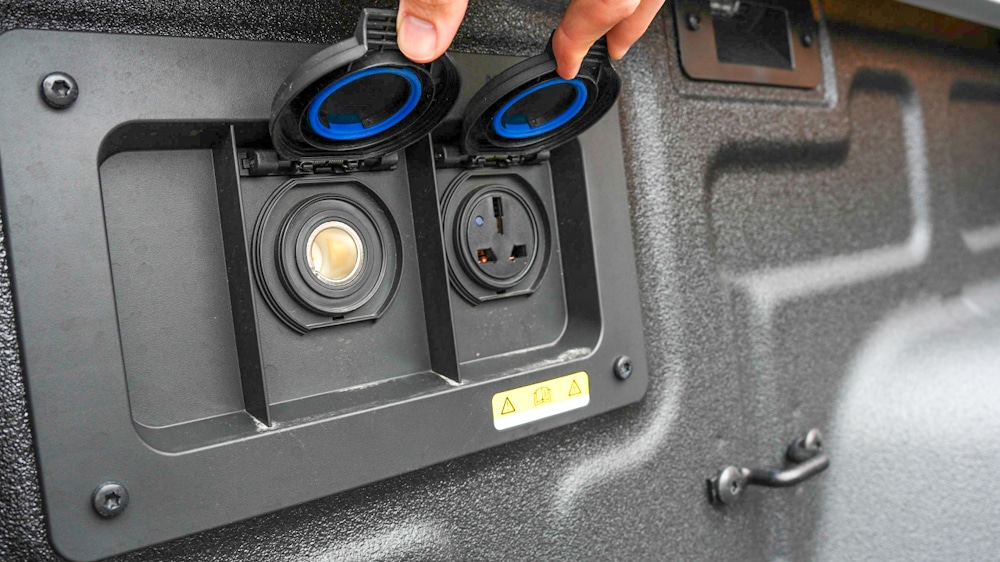
The front of the car can be switched between rear-wheel-drive and four-wheel-drive modes. On the four-wheel drive side, in addition to slow and fast driving, there is also a new E-AWD, which controls the distribution of torque to the required axles as needed.
Some useful off-road assistance systems for tighter terrain include Trail Control off-road cruise control and Trail Turn Assist to reduce turning radius. The latter reduces turn radius by up to 25 percent by using the rear brake on the turning side, according to the manufacturer.
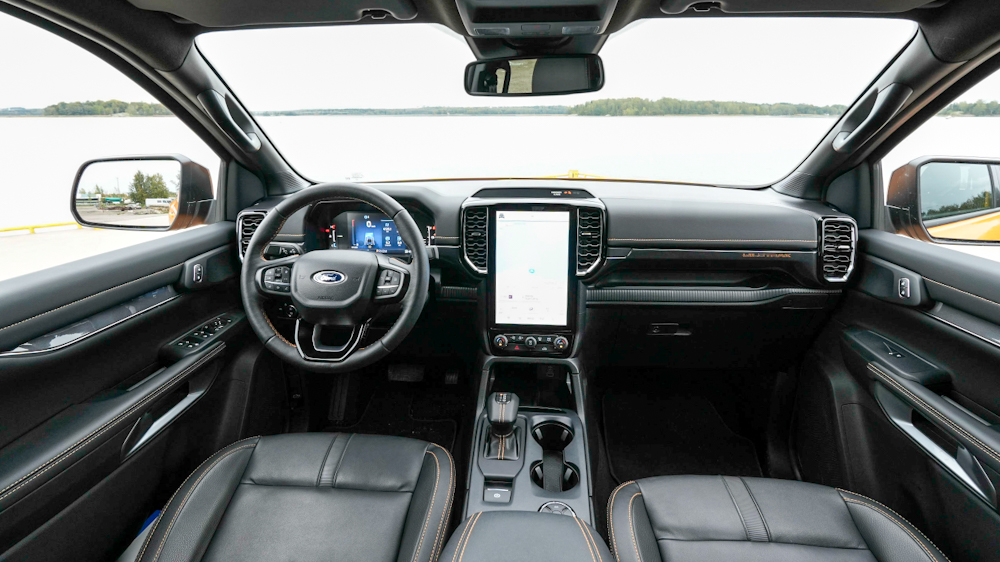
The off-road cruise control can be helpful in tight places where the focus is on steering and a steady forward speed is needed. For example, the throttle can save you from getting stuck in the sand by adjusting the wheels to only pull forward at a crawling speed.
Off-road driving is also helped by information on the instrument panel and instrument cluster, which shows the longitudinal and transverse tilt of the car in degrees, the angle of rotation of the tyres and the traction and tailgate settings. For driving on water, the manufacturer claims a wading depth of 800 mm. The car cannot control the depth itself, so it is left to the driver’s judgement.
Those who tow more trailers can set ten different profiles for different trailers and monitor the consumption figures over time.
America inside
The American automotive industry is a concept that conjures up something in everyone’s mind. Often, when talking about interiors, images are not necessarily top-of-mind when it comes to quality.
The new Ranger is distinctly American inside; the buttons, handles, steering wheel, materials, etc. look like a modern American iron. However, the quality impression is clearly better than one would expect from a traditional ‘pick-up tool’. The car does not staple, creak or hiss, but feels like a well-fitting, high-quality tool in the hand.
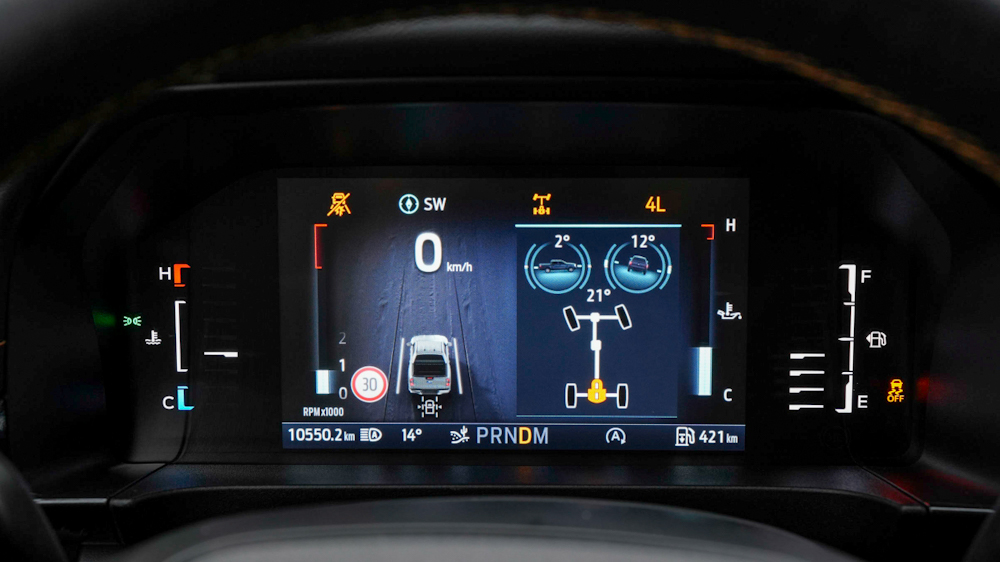
There was a slight fumbling of performance during the week with the large 12-inch neutral. The display came up with the same “useless” notifications disturbingly often and not all icons always took on the expected function. The large screen is placed in the centre in a vertical position, as in the all-electric Mustang Mach-E.
In addition to the two-litre version tested, the range also includes a 170bhp two-litre diesel and a three-litre 240bhp V6 diesel. For the lower-power diesel, six-speed manual and automatic transmissions are available. The test-driven 205 hp and three-litre diesel always come with a ten-speed automatic.
There are several trim levels available for the Ranger. The Wildtrak in the test drive is mid-range in terms of equipment. There is a big difference between the trim levels in terms of standard equipment and feature coverage, but also in terms of price. Depending on the number of seats, the price of the Ranger ranges from around €45,000 to over €100,000.

The Wildtrak model has a ground clearance of 22 centimetres unladen, which can be increased to 26 centimetres by choosing the Tremor or Wildtrak X-equipped Ranger. In total, there are eight trim levels available on the Ranger, including the top-of-the-range Raptor, designed by the Ford Performance team and boosted with steroids, which is ready to pack power for desert dune driving.
The test vehicle was registered as a van (N1). The rear row seats have therefore been dropped, but the price has also been reduced by more than €20,000 compared to a five-seater passenger car thanks to a tax break.
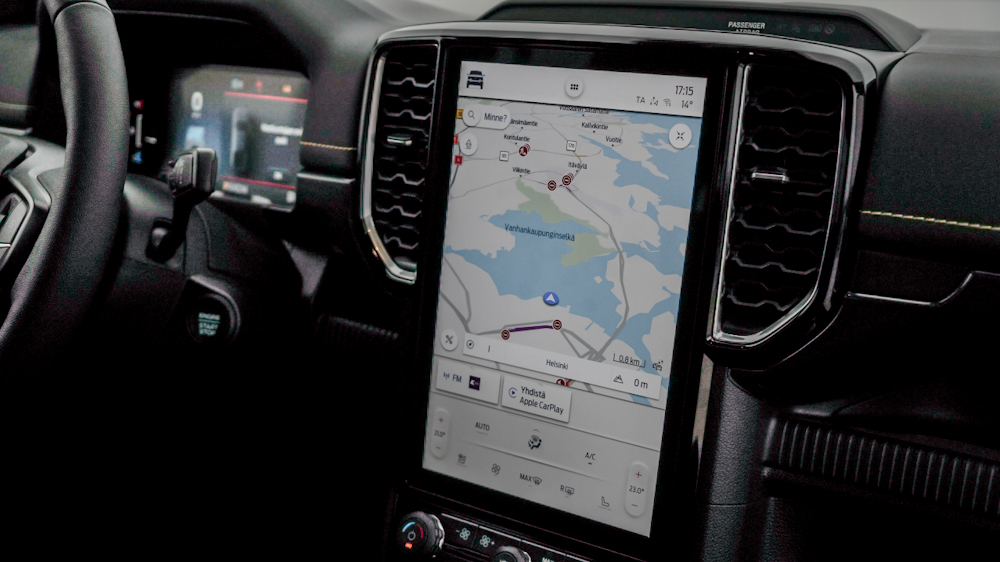
The new Ranger has an American feel to it – this time only in a good way. Inside, it’s loose and comfortable, and even with a smaller engine, the new Ranger will undoubtedly be able to cope with the tasks assigned to it comfortably off-road or on-road.
Ford Ranger Double Cab Wildtrak 2.0 EcoBlue A10
- Engine: 2.0-litre, 4-cylinder, diesel
- Combustion engine power: 205 hp / 153 kW.
- Combustion engine torque: 500 Nm.
- Acceleration: 10.5 sec (0-100 km/h)
- Manufacturer’s declared combined fuel consumption: 8.7-8.9 l/100km.
- CO₂ emissions: 228-232 g/km.
- Fuel consumption in test drive: 8-9.5 l/100km.
- Curb weight: 2311 kg.
- Load capacity (with 75 kg. driver): 969 kg.
- Maximum combined mass: 6 500 kg.
- Traction: four-wheel drive
- Towing capacity (with/without brakes): 750/3500 kg.
- Starting price: 44 610 euro (Ranger Single Cab XL)
- Starting price (N1, Wildtrak): 61 911 euro
- Starting price (passenger car, Wildtrak): 82 709 euros
- Price for test drive: €63 658 (N1, Wildtrak)
